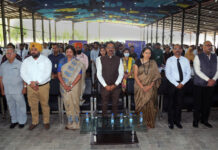Most Indians have the inkling that their ancient culture is the greatest. But not many will include the name ‘science‘ in the list of achievements. Colonialism made us think that science is a benefaction of Europe to the world. However, it is not the complete truth. We have shreds of evidence and records that say aloud that science was flourishing spectacularly in India even around 3000 BC. The world thanks India for many incredible discoveries and inventions. I’m not going to talk about Indus Valley Civilization or the Aryan theory. Instead, I’ll try to put in the picture some remarkable people who paved the way for India’s success in the realm of science in this article (and, of course, the next one).
We all know about Albert Einstein, Isaac Newton, Alfred Nobel, J. Robert Oppenheimer, Ernest Rutherford, etc. But, we’d have hardly heard the names of Sushruta, Charaka, Kanada, Aryabhatta, Brahmagupta, Nagarjuna, Varahimira, and Bhaskara. And, it is the vexed question of this nation. Howbeit, let’s have a glance at the works of some of the prominent Indian scientists. (It’s not possible to cover the infinite list in two articles.)
- Sushruta: (सुश्रुत) Born around 600 BC, Sushruta was from the lineage of Maharishi Vishwamitra. He received his education in medicines and surgery from Varanasi. One of his notable works includes treating the severed nose of a man centuries ago. This operation laid the foundation of modern-day ‘plastic surgery.’ He wrote a book named ‘Sushruta Samhita’ which got translated into Arabic in the eighth century. Sushruta was the first physician to bring into light the cesarean operation. He was also adept at treating gall bladder stones, fractured bones, and cataract disease. He mentioned about 101 different surgical instruments in his book.
- Charaka: (चरक) Charaka gave intelligible comments on physiology, etiology, and embryology. He mentioned all this in his book, ‘Charaka Samhita,’ some twenty centuries ago. He was the first to give accreditation to the process of digestion, metabolism, and immunity. According to him, there are three impurities in the body — ‘pitta,’ ‘vat,’ and ‘kaf.’ And, imbalance of these three causes diseases. Charaka knew about the fundamental principles of genetics. He stated after analysis the number of bones as 360 in the human body, including teeth, and studied arteries and veins connecting the heart to different organs. However, there seems to be no record of his personal life. There’s a legend that says he was the son of a sage and traveled several miles on foot to treat the ailing public.
- Kanada: (कणाद) Kanada was a magnificent man who demonstrated ‘Vaisheshika Sutra’ around 600 BC. His principles involved the existence of the atom and were much advanced as compared to Leucippus and Democritus. He stated, in actuality, that the part of the matter which can’t further subdivide is the atom. He gave it the name ‘Parmanu.’ Atoms, which are perpetual and eternal, are the building blocks of everything, he said. He also stated, which got him ahead of other philosophers, that atoms are of different types like matter is. An atom holds the characteristics of matter of which it is a part. He didn’t stop even here and gave illustrious comments on molecular bonding, both intrinsic and extrinsic.
- Patanjali: (पतंजलि) Although there is mention of yoga in Atharva Veda and Upanishads, the person who detailed its concepts was no other than Patanjali. He asserted that there are centers in the human body called ‘chakras’ and, if one controls them, he can activate his ‘kundalini’ and attain divine power. He gave the concept of the eightfold yoga system. He demonstrated how one connects with God through yoga. After centuries, scientists are taking into view the power of yoga in the modern world. It is now being proven by various experiments how yoga can treat many physical and mental diseases.
- Aryabhatta: (आर्यभट्ट) March 21st, 499 was the inauguration day of the book ‘Aryabhatiya.’ Aryabhatta was born in the year 416 in Kerala. When his book got successfully accepted as a distinctive composition, the then Gupta ruler, Buddhagupta, appointed him as the head for Nalanda University. He was the first to state that the Earth is round and rotates at its axis to cause day and night. He asserted that there is darkness on the Moon and, it shines due to sunlight. He clarified many doubts about lunar and solar eclipses. Not only in astronomy, but Aryabhatta’s contribution is mathematics is also remarkable. He approximated the value of the pi as 3.1416. And, he was the first to give the ‘table of science’ also. His indeterminate equation, i.e., ax + by = c, is widely known by the modern world. He invented a way to write down large numerical values in words and put up his works on mensuration, square and cube roots, progressions, and astronomical patterns.
I could mention only five in this article though the list goes till infinity. As a small effort in reminding you of the splendid knowledge that inhabited India, I’ll write another piece to cover five more incredible scientists. As you can see, these people didn’t receive any convent schooling but still gave the world magnificent discoveries through their farsightedness.


















